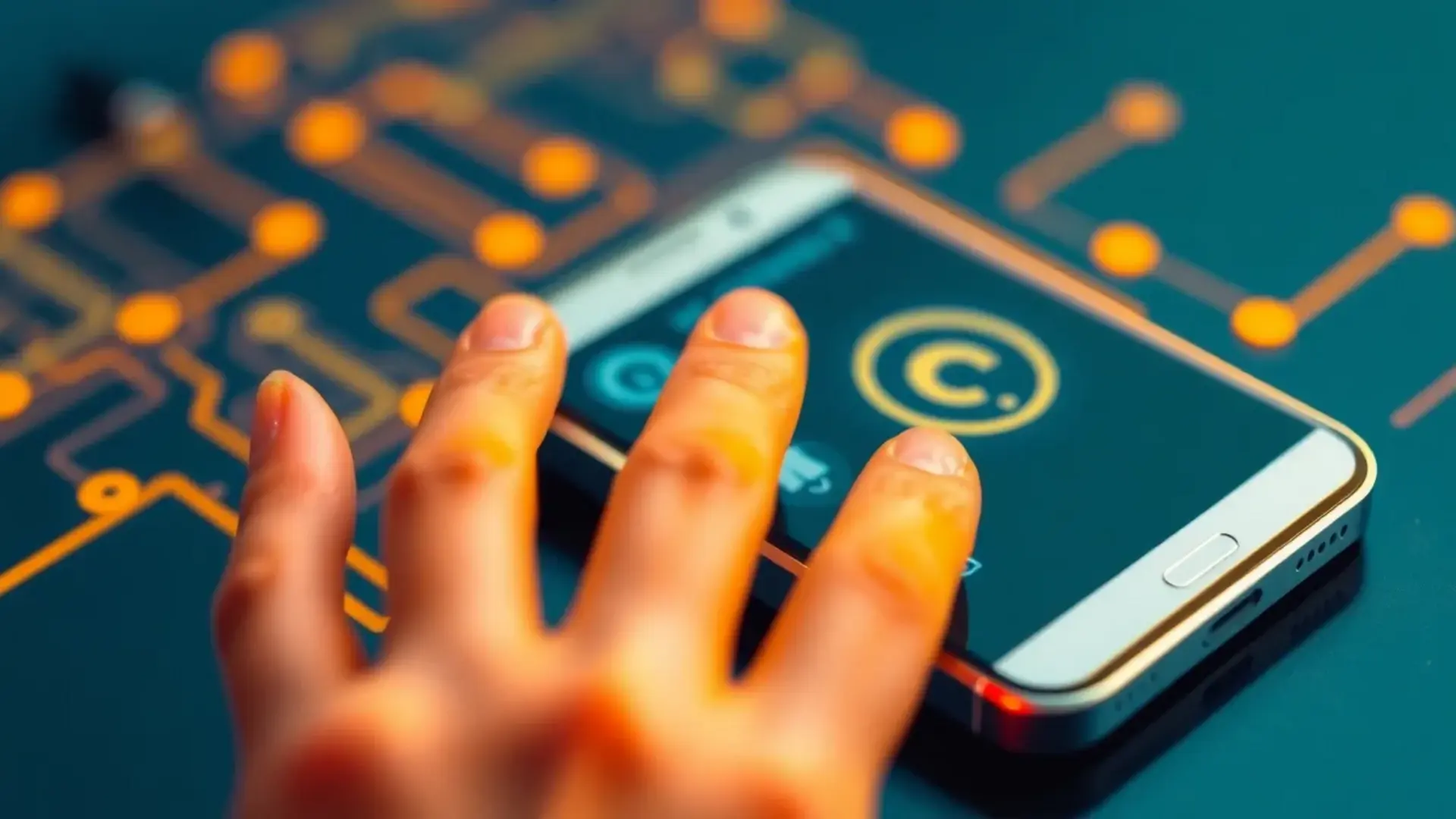Mobile payments are becoming increasingly popular. They offer convenience and speed for everyday transactions. But does it pose a security risk to tap your device?
Understanding the vulnerabilities of mobile payments is crucial. With the rise of tap-to-pay technology, concerns about security have grown. Are these concerns justified?
This article explores the potential risks associated with tapping. It also delves into fraud detection methods and payment fraud prevention strategies.
Stay informed and protect your identity. Learn how to use mobile payments safely and securely.
Understanding Mobile Payment Systems
Mobile payment systems use Near Field Communication (NFC) to facilitate transactions. This technology allows devices to exchange data when they’re close to each other. It’s the backbone of tap-to-pay systems.
Several security features are built into mobile payment systems. These include encryption, tokenization, and multi-factor authentication. Each plays a role in keeping your information safe.
Mobile payments are now more popular than ever. Their success is due to both convenience and security advancements. It’s essential to understand how these systems work to make informed decisions.
- NFC technology: Enables secure, short-distance communication.
- Encryption: Protects data during transmission.
- Tokenization: Replaces card details with unique tokens.
Overview of Tap-to-Pay Technology
Tap-to-pay technology is powered by NFC. Transactions occur instantly with just a tap of your device. This eliminates the need for physical cards.
However, understanding its operation is crucial. While the system is generally secure, potential vulnerabilities like relay attacks exist. Knowing these risks can aid in safeguarding your transactions.
- Instant transactions: Payment is made quickly and easily.
- No need for cards: Reduces physical card theft.
- Possible vulnerabilities: Risks like relay attacks need awareness.
Popular Devices for Mobile Payments
Smartphones and smartwatches are at the forefront of mobile payments. They’ve integrated NFC to support tap-to-pay transactions seamlessly.
Each device offers different features. Understanding the capabilities of your device can enhance your payment experience.
- Smartphones: Most common for tap-to-pay.
- Smartwatches: Provide convenient, wrist-based payment options.
- Device integration: NFC is built-in for easy access to tap-to-pay.
Security Risks Associated with Tapping
Tap-to-pay technology offers convenience but also brings security concerns. One major risk is eavesdropping, where an attacker intercepts NFC signals. This requires proximity but poses a valid threat.
Another significant risk is the relay attack. Here, a malicious party intercepts and relays communication between the card and the reader. This type of attack can potentially lead to unauthorized transactions.
Users must be aware of these risks and take precautions. Regular software updates and disabling NFC when not needed can help. Being cautious of unfamiliar payment terminals is also advisable.
- Eavesdropping risk: Potential for intercepted NFC signals.
- Relay attacks: Communication interception between device and reader.
- Preventive measures: Regular updates and cautious tapping.
Identity Theft Protection Concerns
Mobile payments can expose users to identity theft risks. Personal information is a valuable target for cybercriminals. Protecting this data is paramount.
To mitigate risks, consumers should enable features like biometric verification. Keeping devices locked with strong passwords also adds protection.
- Biometric verification: Enhances security through fingerprint or facial recognition.
- Strong passwords: Further protects against unauthorized access.
- Data protection: Crucial for preventing identity theft.
Analysis of Payment Fraud Prevention Measures
Payment fraud prevention relies heavily on advanced security technologies. Multi-factor authentication is one such measure improving transaction security. It requires users to verify identity through multiple steps.
Financial institutions also invest in fraud detection systems. These systems monitor transactions, alerting users to potential fraud.
- Multi-factor authentication: Adds layers to user verification.
- Fraud detection systems: Monitor and report suspicious activities.
- Institutional investment: Encourages ongoing improvements in security measures.
Specific Risks of Tapping with Smartwatches
Smartwatches are popular for contactless payments, but they introduce distinct risks. These devices often lack the robust security of smartphones. The smaller form factor can limit built-in security features.
Potential vulnerabilities include easy loss or theft, as watches can be quickly removed. Furthermore, NFC chips in wearables might have weaker signal encryption, making them prone to interception.
- Limited security: Smaller form factor restricts security enhancements.
- Ease of theft: High risk of losing the device.
- Weak NFC encryption: More susceptible to signal interception.
Does It Pose a Security Risk to Tap Your Smartwatch?
Tapping your smartwatch can pose significant risks. Compared to phones, smartwatches may offer fewer security measures. This makes them attractive targets for attackers looking to exploit vulnerabilities.
- Reduced security: Less protection than smartphones.
- Target for attackers: Attractive for exploiting vulnerabilities.
- Potential risks: Higher susceptibility to security breaches.
Vulnerabilities Unique to Wearable Devices
Wearable devices face unique security challenges. Limited processing power can hamper sophisticated encryption implementation. Additionally, their constant exposure increases the potential for unauthorized access.
Manufacturers should focus on strengthening these devices against such risks. Regular updates and enhanced encryption must be priorities.
- Limited processing power: Can restrict advanced security measures.
- Exposure risk: Constant wear heightens potential unauthorized access.
- Strengthening measures: Essential for manufacturers to enhance security.
Fraud Detection Methods in Mobile Payments
Fraud detection in mobile payments relies on advanced technologies. These methods strive to identify and block fraudulent activities swiftly. Financial institutions employ sophisticated tools to keep consumers safe.
A range of fraud detection techniques is currently used. Machine learning plays a central role in recognizing patterns that indicate fraud. Furthermore, real-time transaction monitoring helps pinpoint anomalies.
- Machine learning: Identifies suspicious patterns.
- Real-time monitoring: Detects anomalies promptly.
- Advanced tools: Ensures consumer safety.
Current Techniques and Technologies
Current fraud detection techniques continually evolve. Machine learning algorithms analyze vast datasets to uncover fraud trends. Additionally, biometric verification adds an extra layer of security.
Innovation in this area enhances protection. Multi-factor authentication has become a standard defense against fraud.
- Biometric verification: Strengthens security.
- Trend analysis: Identifies fraud patterns.
- Multi-factor authentication: Provides additional defense.
Limitations of Existing Fraud Detection Methods
Despite advancements, existing methods have limitations. False positives can occur, where legitimate transactions are incorrectly flagged. Moreover, emerging threats may not be immediately recognized.
Adapting quickly to new fraud tactics is crucial. Continual refinement is necessary to minimize these gaps.
- False positives: Can disrupt legitimate activities.
- Emerging threats: Not instantly detected.
- Continuous improvement: Essential for minimizing risks.
Recommendations for Safe Mobile Transactions
Staying secure with mobile transactions involves proactive steps. Regularly updating device software is crucial. Users should also use strong, unique passwords for each device and application.
It’s important to remain cautious about where and how you tap. Avoid using unknown or untrustworthy terminals. Implementing these practices reduces the risk of unauthorized access.
- Update software regularly: Keep devices secure.
- Strong passwords: Prevents unauthorized access.
- Cautious terminal use: Ensures transaction safety.
Best Practices for Users
Adopt secure habits to protect your transactions. Always verify payment apps for authenticity before use. Consider using biometric locks for added security and disable NFC when not needed.
- Verify apps: Ensure authenticity.
- Biometric locks: Enhance security.
- Disable NFC: When not in use.
Future Trends in Mobile Payment Security
The future of payment security is promising. Artificial intelligence will play a larger role in identifying fraudulent activities. More robust biometric technologies will enhance protection.
Expect innovations in tokenization and encryption practices as well. Enhanced security measures continue to evolve to counter emerging threats.
- AI integration: Improves fraud detection.
- Robust biometrics: Strengthens security.
- Innovative encryption: Protects transactions.















